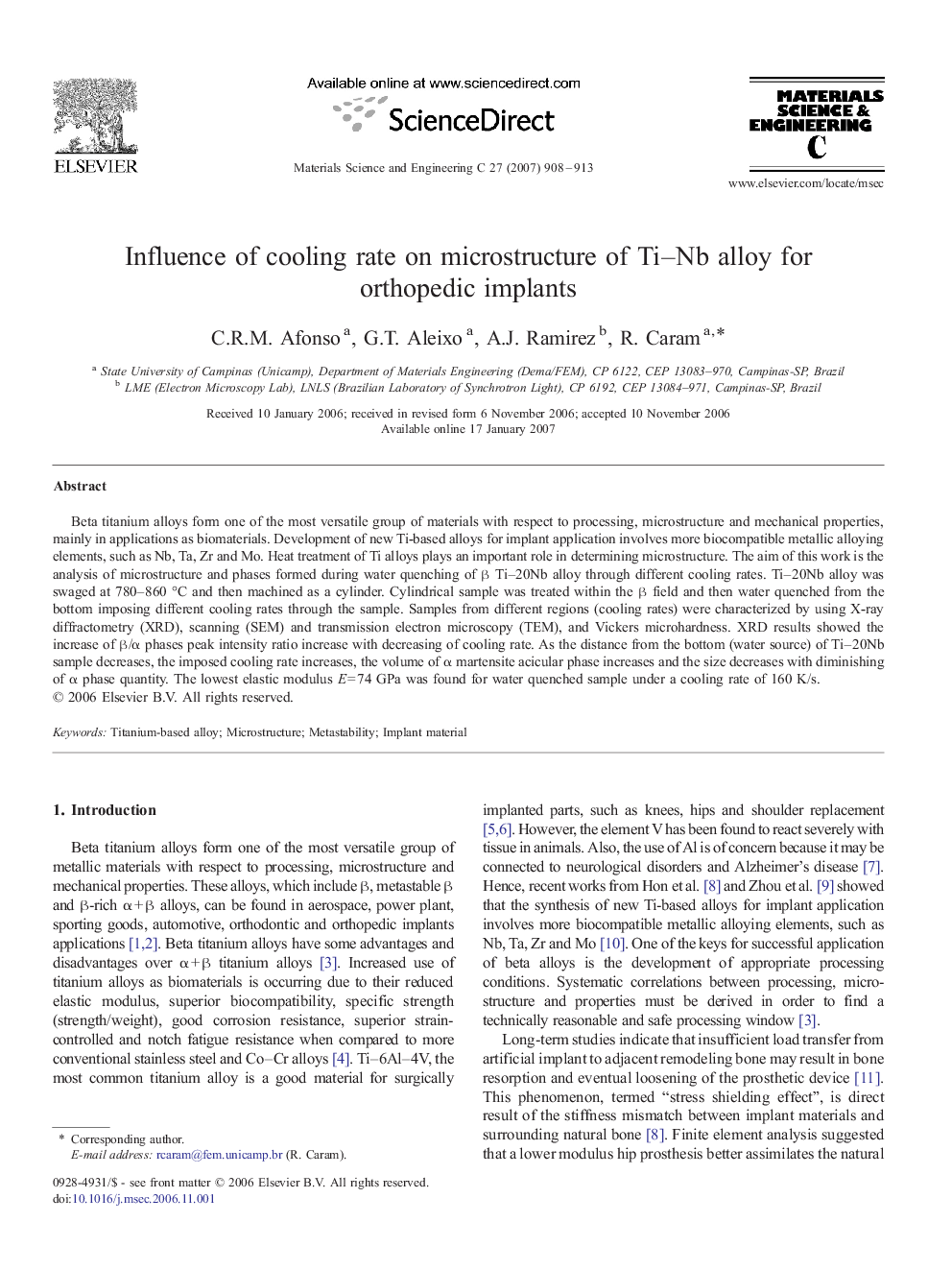| Article ID | Journal | Published Year | Pages | File Type |
|---|---|---|---|---|
| 1431001 | Materials Science and Engineering: C | 2007 | 6 Pages |
Beta titanium alloys form one of the most versatile group of materials with respect to processing, microstructure and mechanical properties, mainly in applications as biomaterials. Development of new Ti-based alloys for implant application involves more biocompatible metallic alloying elements, such as Nb, Ta, Zr and Mo. Heat treatment of Ti alloys plays an important role in determining microstructure. The aim of this work is the analysis of microstructure and phases formed during water quenching of β Ti–20Nb alloy through different cooling rates. Ti–20Nb alloy was swaged at 780–860 °C and then machined as a cylinder. Cylindrical sample was treated within the β field and then water quenched from the bottom imposing different cooling rates through the sample. Samples from different regions (cooling rates) were characterized by using X-ray diffractometry (XRD), scanning (SEM) and transmission electron microscopy (TEM), and Vickers microhardness. XRD results showed the increase of β/α phases peak intensity ratio increase with decreasing of cooling rate. As the distance from the bottom (water source) of Ti–20Nb sample decreases, the imposed cooling rate increases, the volume of α martensite acicular phase increases and the size decreases with diminishing of α phase quantity. The lowest elastic modulus E = 74 GPa was found for water quenched sample under a cooling rate of 160 K/s.
